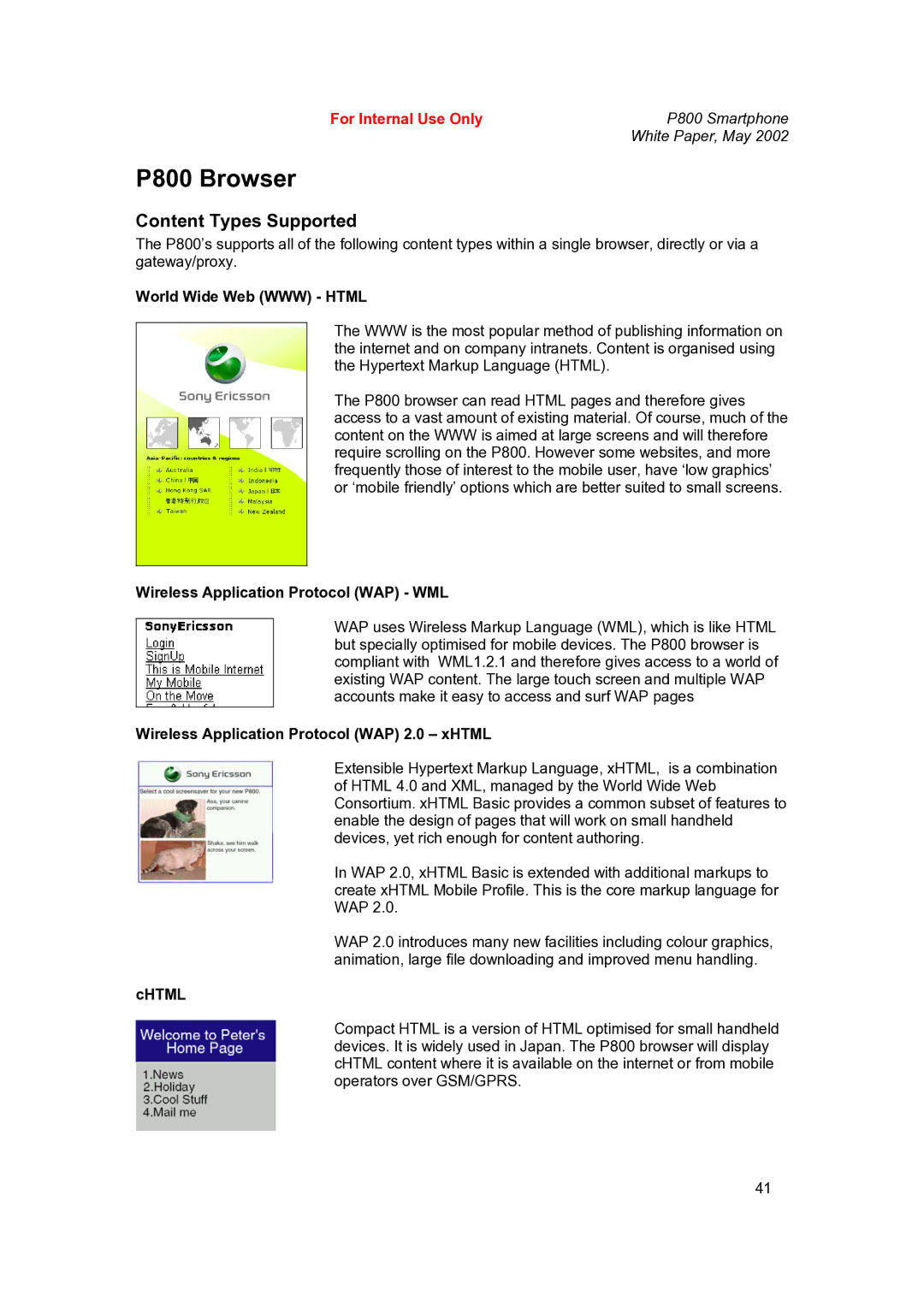
For Internal Use Only | P800 Smartphone |
| White Paper, May 2002 |
P800 Browser
Content Types Supported
The P800’s supports all of the following content types within a single browser, directly or via a gateway/proxy.
World Wide Web (WWW) - HTML
The WWW is the most popular method of publishing information on the internet and on company intranets. Content is organised using the Hypertext Markup Language (HTML).
The P800 browser can read HTML pages and therefore gives access to a vast amount of existing material. Of course, much of the content on the WWW is aimed at large screens and will therefore require scrolling on the P800. However some websites, and more frequently those of interest to the mobile user, have ‘low graphics’ or ‘mobile friendly’ options which are better suited to small screens.
Wireless Application Protocol (WAP) - WML
WAP uses Wireless Markup Language (WML), which is like HTML but specially optimised for mobile devices. The P800 browser is compliant with WML1.2.1 and therefore gives access to a world of existing WAP content. The large touch screen and multiple WAP accounts make it easy to access and surf WAP pages
Wireless Application Protocol (WAP) 2.0 – xHTML
Extensible Hypertext Markup Language, xHTML, is a combination of HTML 4.0 and XML, managed by the World Wide Web Consortium. xHTML Basic provides a common subset of features to enable the design of pages that will work on small handheld devices, yet rich enough for content authoring.
In WAP 2.0, xHTML Basic is extended with additional markups to create xHTML Mobile Profile. This is the core markup language for WAP 2.0.
WAP 2.0 introduces many new facilities including colour graphics, animation, large file downloading and improved menu handling.
cHTML
Compact HTML is a version of HTML optimised for small handheld devices. It is widely used in Japan. The P800 browser will display cHTML content where it is available on the internet or from mobile operators over GSM/GPRS.
41
